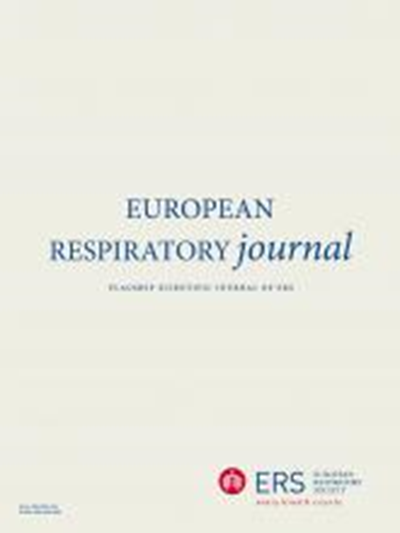Genetic associations between Serotonin Receptor 1F (HTR1F) regulatory variation and sleep apnea in non-obese individuals: Insights from GWAS and eQTL analyses.
IF 16.6
1区 医学
Q1 RESPIRATORY SYSTEM
引用次数: 0
Abstract
BACKGROUND Sleep apnea is a common sleep disorder affecting at least ten percent of the population. It is caused by lack of breathing during sleep, typically mediated by obstruction of airways or less frequently by misdirected central signals for breathing. The primary risk factor is a high body mass index (BMI), causing airway obstruction. However, understanding risk factors for sleep apnea in non-obese (BMI<30) individuals requires further exploration. AIM Our goal was to elucidate genetic risk factors for sleep apnea in non-obese individuals. METHODS We performed genome-wide association testing in individuals with BMI<30 in FinnGen including 20 413 cases with sleep apnea diagnosis (ICD-10 G47.3 or ICD-9 3472) and 443 463 disease free controls. We replicated our analysis in Estonian Biobank. RESULTS We identified a significant association within the Serotonin receptor 1F (HTR1F) locus (rs1818163, beta=0.059, se=0.010, p<1.58e-8), and replicated the association in Estonian Biobank (beta =0.042, se=0.020, p=0.034). The association signal co-localized with HTR1F expression across multiple tissues (posterior probability>0.8), and single cell sequencing implicated HTR1F expression particularly in neurons. Analysis of eQTL data further supported a possible regulatory role in neurons (beta=-0.03, p=1.2e-4). Finally, PheWAS analysis of rs1818163 showed an association with objectively measured sleep-activity data, specifically with the number of awakenings during the night (p=5.6e-8). CONCLUSIONS The findings indicate association of HTR1F in sleep apnea particularly in the patient population within the non-obese BMI range and provide insight into the growing evidence of serotonin signaling as a factor modulating liability to sleep apnea.非肥胖个体血清素受体1F (HTR1F)调节变异与睡眠呼吸暂停之间的遗传关联:来自GWAS和eQTL分析的见解
背景:睡眠呼吸暂停是一种常见的睡眠障碍,影响着至少10%的人口。它是由睡眠时呼吸不足引起的,通常由气道阻塞介导,或较少由错误的呼吸中枢信号引起。主要危险因素是高身体质量指数(BMI),导致气道阻塞。然而,了解非肥胖者睡眠呼吸暂停的危险因素(BMI0.8)和单细胞测序涉及HTR1F表达,特别是在神经元中。对eQTL数据的分析进一步支持了在神经元中可能的调节作用(β =-0.03, p=1.2e-4)。最后,rs1818163的PheWAS分析显示与客观测量的睡眠活动数据相关,特别是与夜间醒来次数相关(p=5.6e-8)。结论:研究结果表明HTR1F与睡眠呼吸暂停有关,特别是在非肥胖BMI范围内的患者人群中,并为血清素信号作为调节睡眠呼吸暂停的因素提供了越来越多的证据。
本文章由计算机程序翻译,如有差异,请以英文原文为准。
求助全文
约1分钟内获得全文
求助全文
来源期刊

European Respiratory Journal
医学-呼吸系统
CiteScore
27.50
自引率
3.30%
发文量
345
审稿时长
2-4 weeks
期刊介绍:
The European Respiratory Journal (ERJ) is the flagship journal of the European Respiratory Society. It has a current impact factor of 24.9. The journal covers various aspects of adult and paediatric respiratory medicine, including cell biology, epidemiology, immunology, oncology, pathophysiology, imaging, occupational medicine, intensive care, sleep medicine, and thoracic surgery. In addition to original research material, the ERJ publishes editorial commentaries, reviews, short research letters, and correspondence to the editor. The articles are published continuously and collected into 12 monthly issues in two volumes per year.
 求助内容:
求助内容: 应助结果提醒方式:
应助结果提醒方式:


